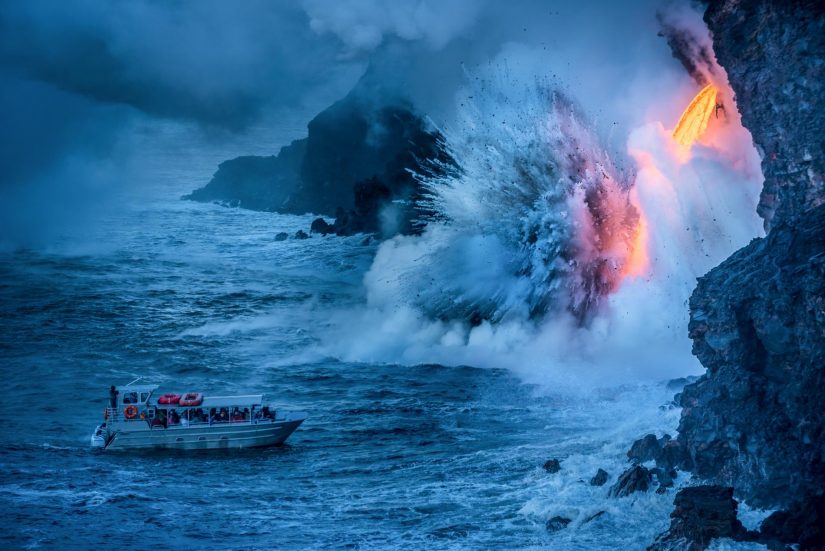Olelo hawaii
Hawaiian, or Olelo Hawaii, is one of the oldest living languages. But the number of people speaking it dropped sharply after 1778, when the first Europeans appeared on the islands. Today, only 1% of Hawaii’s population can speak their native language.
The history of the development of the Hawaiian language is quite impressive. Over the past 30 years, there have been many attempts to revive the language, with many people re-learning Hawaiian. Currently, Hawaiian is taught in language schools, and at the University of Hawaii in Hilo, you can even get a Master’s degree in Hawaiian.
History of the Hawaiian language
Prior to Captain Cook’s arrival on the islands, Hawaiian was strictly spoken. It was first recorded in writing in 1778 by Cook and his team. They immediately realized that the Hawaiian language is very similar to the language of the Maori people or the inhabitants of the Tahiti island.
Missionaries who arrived in Hawaii felt the need to express the Hawaiian language in writing. They taught Hawaiians to read Hawaiian because that was the only way they could spread the word of God.
The missionaries developed the Hawaiian alphabet of 12 letters. Later, two punctuation marks were added to the alphabet – okina (okina) and kahako (kahako).
Prohibition of the use of the Hawaiian language
Hawaiian has been the main language of communication on the islands for many years. But after Hawaii was annexed to the United States in 1898, the language was officially banned from teaching in schools and making laws. The use of the Hawaiian language was even banned at the Kamehameha School, which only taught children with Hawaiian roots.
It is important to clarify that the ban on the use of the Hawaiian language was not a ban on the language itself. People could continue to communicate in Hawaiian in their daily lives. There were even 14 Hawaiian-language newspapers: Ka Lama Hawaii and Ke Kumu Hawaii, which began publishing in 1834, and the Ka Nupepa Kuoka newspaper, which lasted 66 years, from 1861 to 1927, are worth mentioning.
Restoring the Hawaiian language
In 1978, Hawaiian was recognized as the official language of the state of Hawaii. In 1989, government funded Hawaiian language programs were launched. Many students chose Hawaiian to study in college.
Hawaiian is now the native language of 1,000 of Hawaii’s indigenous people, and about 8,000 more can speak it fluently. Still, this is far less than the 500,000 Hawaiian speakers who inhabited the islands during Captain Cook’s time. But it must be admitted that this is a good start for the resurrection of an almost extinct language.
A brief introduction to the Hawaiian language
The Hawaiian alphabet consists of 13 letters – 5 vowels, 7 consonants and the okina sign (‘), which denotes a hard fit. Okina signals a pause in pronunciation. Although it does not look like a letter, it is still classified as a letter, since it occupies a certain place when writing a word. The absence of an okina can change the meaning of a word, for example:
ulu – to grow
‘ulu – breadfruit
Thus, the Hawaiian alphabet looks like this:
A, E, I, O, U, H, K, L, M, N, P, W, ‘
There are four basic rules in Hawaiian:
All words end with a vowel
A consonant is followed by one (or more) vowels
A syllable always ends with a vowel
Two consonants cannot stand side by side
Okina (hard attack) occurs only between two vowels. It can also appear at the beginning of a word. Okinu is used by native speakers in both oral and written speech.
But it isn’t always used in print or on the Internet. However, this mark is used in most Hawaiian newspapers and books.
For example, the word Lanai without okina is read as Lanai, and with okina (Lana’i) – Lanai.
Another example is the word Molokai: without an okina it reads Molokai, and with an okina it reads Molokai.
Both pronunciations of these names are acceptable, but it is worth remembering that in some words, the okina can completely change the meaning.
The vowel sounds of the Hawaiian language are similar to those of the Russian:
A is pronounced like “A”
E is pronounced like “E”
I pronounced like “I”
O is pronounced like “O”
U pronounced like “U”
The consonant W is pronounced like Russian “B”
During your stay in Hawaii, try to listen to the words of the folk songs to see if you can hear okinas and kahako.
